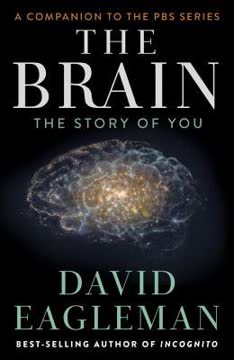Key Takeaways
1. The brain is a self-configuring organ that adapts to its environment
"Instead of entirely pre-script the brain; instead, just set it up with the basic building blocks and get it into the world."
Neural flexibility is key. The brain's ability to reconfigure itself based on experience allows it to adapt to varied environments and body plans. This plasticity is evident in cases like Alice, born with only half a brain, who developed normal cognitive abilities. The brain's adaptability is driven by the constant competition among neurons for resources and connections.
Experience shapes the brain. From birth, the brain absorbs information from its surroundings, molding its circuitry to reflect the world it encounters. This process allows humans to adapt to diverse cultures, languages, and environments. The brain's plasticity explains why identical twins raised in different environments can develop distinct personalities and capabilities.
- Examples of brain adaptation:
- Language acquisition in different cultures
- Skill development based on environmental demands
- Cognitive adjustments to technological changes
2. Sensory inputs shape neural maps and cortical organization
"The brain contains a map of the body because of a simple rule that governs how individual brain cells make connections with one another: neurons that are active close in time to one another tend to make and maintain connections between themselves."
Sensory experience creates neural maps. The brain's sensory maps, such as the somatosensory homunculus, are not genetically predetermined but emerge from patterns of sensory input. This process explains how the brain can adapt to changes in the body, such as limb loss or sensory deprivation.
Cortical reorganization occurs rapidly. Studies have shown that the brain can begin to rewire itself within hours of sensory changes. For example, blindfolding sighted individuals for just a few days leads to measurable changes in how their visual cortex responds to non-visual stimuli.
- Factors influencing cortical organization:
- Frequency and intensity of sensory inputs
- Temporal correlation between different inputs
- Relevance of the input to the individual's goals
3. The brain can learn to use new sensory inputs and body configurations
"Whatever information the brain is fed, it will learn to adjust to it and extract what it can."
Sensory substitution demonstrates brain flexibility. Devices that convert visual information into tactile or auditory signals, such as the BrainPort or vOICe system, show how the brain can learn to interpret new forms of sensory input. This adaptability suggests that the brain is a general-purpose computing device capable of processing various types of information.
Body schema is malleable. The brain's ability to incorporate tools and prosthetics into its body representation highlights its capacity to adapt to new body configurations. This plasticity extends to controlling robotic limbs through brain-computer interfaces, demonstrating the brain's remarkable ability to learn new ways of interacting with the world.
- Examples of sensory and body adaptations:
- Blind individuals using echolocation
- Amputees controlling prosthetic limbs with thoughts
- Humans learning to use novel tools or technologies
4. Relevance and goals drive neural plasticity and learning
"Brains shift only when something is unpredicted."
Attention and reward shape plasticity. The brain doesn't change indiscriminately; rather, it focuses its resources on information and skills that are relevant to the individual's goals and experiences. This targeted plasticity is mediated by neuromodulators like acetylcholine, which signal the importance of particular inputs or experiences.
Learning is most effective when goal-oriented. The story of the Polgár sisters, who became chess prodigies through intensive training, illustrates how focused practice can shape neural circuits. Similarly, musicians like Itzhak Perlman develop specialized brain areas through years of dedicated practice.
- Factors enhancing learning and plasticity:
- Personal relevance and motivation
- Immediate feedback and rewards
- Active engagement and practice
5. The brain balances stability and flexibility through competitive processes
"Parts of the brain teach other parts."
Neural competition drives adaptation. The brain maintains a delicate balance between stability and flexibility through competitive processes among neurons and brain regions. This competition allows for rapid changes in response to new inputs while preserving important existing connections.
Multiple timescales of plasticity coexist. The brain employs various mechanisms for change, from rapid unmasking of existing connections to slower growth of new synapses and neurons. This multi-tiered approach allows for both quick adaptations and long-term learning.
- Mechanisms of neural plasticity:
- Synaptic strengthening and weakening
- Axonal and dendritic growth
- Neurogenesis in specific brain regions
6. Memory involves multiple timescales and distributed changes in the brain
"Memory storage is not like a filing cabinet, but instead like distributed cloud computing."
Memory is a distributed process. Rather than being stored in a single location, memories are encoded across widespread neural networks. This distributed nature allows for resilience and flexibility in memory storage and retrieval.
Multiple timescales of memory exist. The brain employs various mechanisms for short-term and long-term memory storage, from temporary changes in synaptic strength to more permanent structural modifications. This layered approach allows for both rapid learning and stable long-term memories.
- Types of memory processes:
- Short-term synaptic changes
- Long-term potentiation and depression
- Structural changes in neural networks
- Epigenetic modifications
7. Brain plasticity decreases with age but remains present throughout life
"Every man is born as many men and dies as a single one."
Plasticity diminishes but persists. While the brain's capacity for change is greatest in youth, significant plasticity remains throughout life. The decrease in plasticity with age reflects the brain's optimization for efficiency and stability.
Lifelong learning is possible. Despite reduced plasticity, adults can continue to learn and adapt. Engaging in novel and challenging activities can help maintain cognitive flexibility and even promote the growth of new neurons in specific brain regions.
- Strategies for maintaining brain plasticity:
- Engaging in novel and challenging activities
- Maintaining physical exercise and social engagement
- Continuous learning and skill acquisition
Last updated:
FAQ
What's Livewired: The Inside Story of the Ever-Changing Brain about?
- Exploration of Brain Plasticity: The book delves into brain plasticity, showing how the brain rewires itself based on experiences and environmental interactions.
- Neural Predictions and Adaptations: It discusses how the brain forms internal models to predict outcomes, affecting behavior and learning.
- Real-Life Examples: Eagleman uses case studies, like Matthew's hemispherectomy, to illustrate the brain's adaptability and resilience.
Why should I read Livewired by David Eagleman?
- Accessible Neuroscience: Eagleman presents complex neuroscience in an engaging and relatable manner, making it accessible to non-experts.
- Insight into Human Experience: The book offers profound insights into how our brains shape perceptions, behaviors, and identities.
- Relevance to Technology: It connects neuroscience with technological advancements, exploring how we might enhance human capabilities.
What are the key takeaways of Livewired?
- Dynamic Brain: The brain is a "livewired" system, constantly changing and adapting based on experiences.
- Importance of Predictions: The brain functions as a prediction machine, adjusting its models to optimize responses.
- Potential for Growth: Neuroplasticity allows for recovery and adaptation, highlighting the brain's ability to reorganize itself.
How does Livewired explain brain plasticity?
- Constant Rewiring: The brain rewires itself based on experiences, allowing for learning and memory to alter its structure.
- Experience-Dependent Changes: Engaging in specific activities can lead to growth in relevant brain areas, like musicians developing neural connections.
- Role of Neuromodulators: Chemicals like acetylcholine signal when the brain should change, focusing on relevant experiences.
What are the best quotes from Livewired and what do they mean?
- "Every man is born as many men and dies as a single one.": Reflects the fluid nature of identity shaped by experiences.
- "The brain is a dynamic system, constantly altering its own circuitry.": Highlights the brain's adaptability to new information.
- "Your brain is a prediction machine.": Emphasizes the brain's role in anticipating outcomes for efficient functioning.
How does Livewired address the concept of sensory substitution?
- Alternative Sensory Pathways: Sensory substitution allows information to be received through different channels, like using touch for visual data.
- Real-Life Applications: Devices like BrainPort translate visual information into tactile sensations, aiding those with impairments.
- Neural Reorganization: The brain adapts to new inputs, reorganizing to process information effectively.
What role does the environment play in shaping the brain according to Livewired?
- Environmental Influence: The brain's structure and function are heavily influenced by sensory experiences and social interactions.
- Critical Learning Periods: Sensitive periods in development make the brain particularly receptive to environmental inputs.
- Adaptive Responses: The brain's ability to adapt to challenges, like sensory deprivation, showcases its resilience.
How does Livewired explain the relationship between experience and identity?
- Identity Formation: Experiences shape our neural pathways, meaning our identities are reflections of our interactions.
- Cultural and Social Influences: Cultural and social experiences contribute to shaping beliefs and biases.
- Dynamic Self: The idea that identities are fluid and can change over time based on new experiences.
What is infotropism according to Livewired?
- Definition: Infotropism is the brain's tendency to adapt its circuitry to maximize information extraction from the environment.
- Examples: Sensory systems adjust to changes, like when blindness enhances other senses.
- Learning Implications: Infotropism suggests the brain optimizes responses to new information, essential for learning.
How does Livewired connect neuroscience with technology?
- Neuroprosthetics and Interfaces: The book explores technology that allows direct brain-machine communication, enhancing capabilities.
- Sensory Substitution Devices: Devices convert visual information into other sensory signals, aiding those with impairments.
- Future Possibilities: Speculates on technologies creating new senses or enhancing existing ones, expanding human experience.
How does Livewired illustrate the concept of competition in neural networks?
- Survival of the Fittest: Neurons compete for resources, with active connections being strengthened.
- Dynamic Reorganization: This competition leads to continuous reorganization of neural maps.
- Learning and Memory: Ensures relevant pathways are maintained, crucial for efficient learning.
What is the significance of the sensitive period in brain development as discussed in Livewired?
- Critical Learning Windows: Specific times in development when the brain is highly plastic and receptive to learning.
- Consequences of Missed Opportunities: Missing these periods can lead to learning difficulties later in life.
- Educational Implications: Understanding sensitive periods can inform effective educational and therapeutic strategies.
Review Summary
Livewired receives mostly positive reviews, praised for its accessible explanations of complex neuroscience concepts and engaging storytelling. Readers appreciate Eagleman's exploration of brain plasticity and adaptability, illustrated through fascinating examples and case studies. The book's insights into potential future technologies excite many. Some criticize repetitiveness and occasional factual errors. Overall, reviewers find the book thought-provoking and enlightening, offering a fresh perspective on how the brain functions and adapts to various inputs and environments.
Similar Books
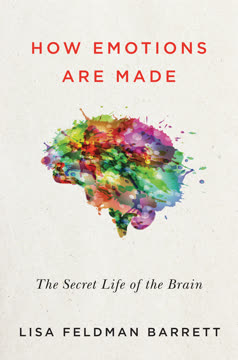



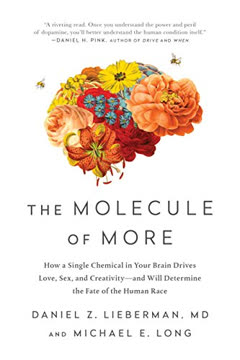
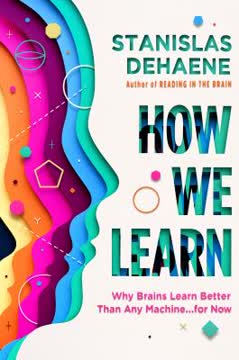



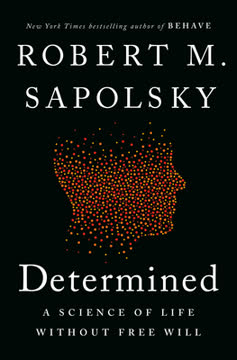
Download PDF
Download EPUB
.epub digital book format is ideal for reading ebooks on phones, tablets, and e-readers.



